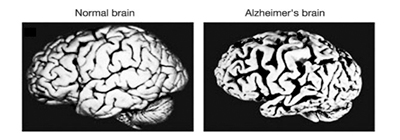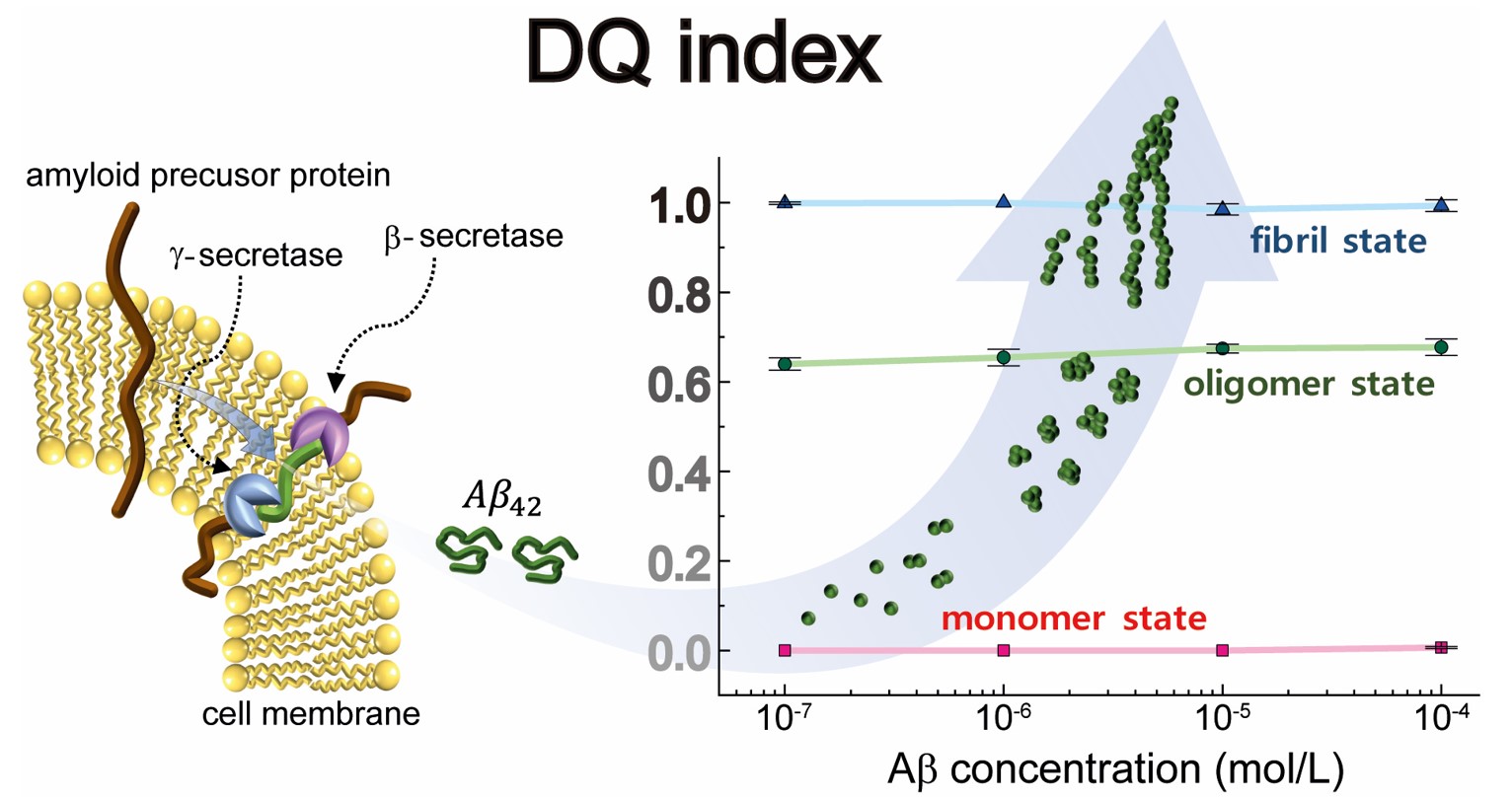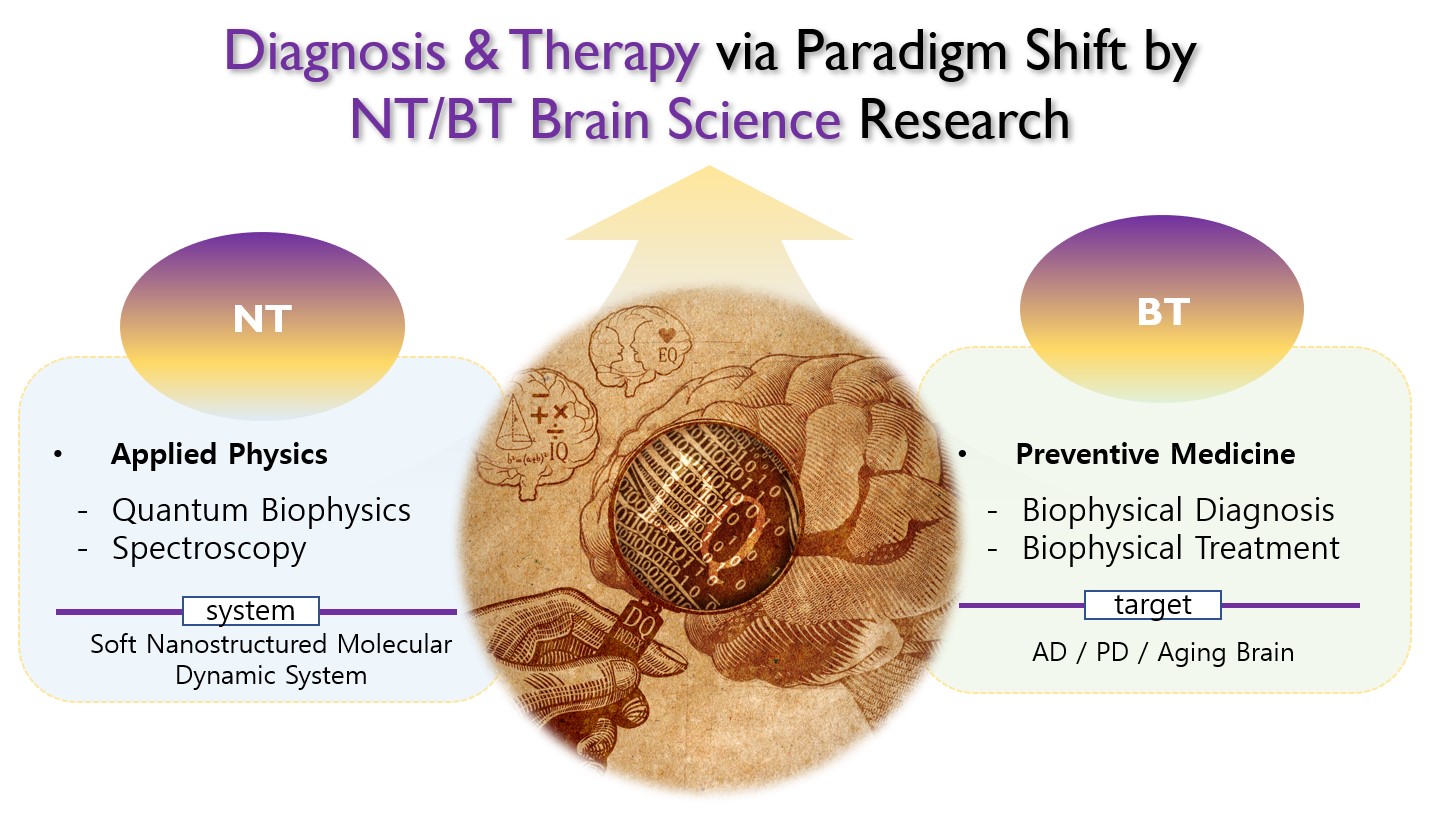mainmenu
To explore new physics phenomena of low dimensional materials
with a special emphasis on two-dimensional layered structures
NT/BT brain science

Dr. Chaejeong Heo
Team Leader
Center for Integrated Nanostructure Physics IBS, Sungkyunkwan University
E-mail:cjheo@skku.edu
Motivation and Research:

▲ Alzheimer’s brain changes
Far over the 100 years since the first Alzheimer’s disease (AD) patient observation in Germany, we have no diagnostics or therapeutic tools even though innumerable researchers have extensively searched for diagnostic methods and therapeutic approaches in biomedical and pharmaceutical fields for a century. Aβ protein represents a pathological hallmark in AD brain and its progressive accumulation leads to neuronal cell loss, neurogenesis impairment, dysfunctional cognitive activity, and dementia, resulting in death. Soluble and small Aβ protein, monomer form of peptide, is released from the cellular membrane and proceeds to elongation to grow in oligomer and finally fibrillar form in the extracellular matrix. Therefore, diagnosis of AD strongly correlated with Aβ protein as a form of monomer, oligomer, and fibril is a primary concern to monitor the progressive stage of AD patient prior to further therapy.

▲ Identifying the toxic protein fibrillization state in the brain tissue.
Now we developed non-invasive, non-contact, non-contaminated and real-time method using by the terahertz (THz) time-domain spectroscopy for investigating the dynamic optical responses on the macro-scale biomolecules. We are conducting the pathophysiology for the carrier diffusion and mobility in Aβ proteins associated with their structural conformation by conductance mapping and able to identify several Aβ proteins in monomer, oligomer, and fibril forms with direct current (DC) conductance measurement.
By extracting the localization parameter from the modified Drude−Smith model, we defined a dementia factor as a discrete measure for detecting a wide variety of amyloid beta proteins. This provides plenty of room for the label-free diagnosis of Alzheimer’s disease in in vitro as well as in human patient samples.

▲ Schematics of explanatory project of NT/BT brain science research
Challenge and Goal:
We aimed to shed light on a possible diagnostic method based on the biophysical properties of toxic proteins with nanoscale physics research, which can be several features as like electrical property and optical property. Amyloid beta (Aβ) protein known as the major virulence protein developed from early stage of AD is the protein that occurs in cells and gradually causes fibrosis in brain tissues. Thereby inducing the death of nerve cells and leading to death due to deterioration of the entire function of the brain. We will study the direct changes in physical properties of fibrillation of Aβ protein to clearly identify fibrosis. Then we will suggest a novel diagnostic tool of dementia progression for human patient through this NT/BT exploratory project and further offer a biophysics based treatment method in early stage of AD as well as other neurodegenerative diseases.
Major publications
Chaejeong Heo, Taewoo Ha, Chunjae You, Thuy Huynh, Hosub Lim, Jiwon Kim, Mallikarjuna Reddy Kesama, Jinkee Lee, Teun-Teun Kim, Young Hee Lee. Identifying Fibrillization State of Aβ Protein via Near-Field THz Conductance Measurement. ACS Nano, March 13, 2020 DOI: https://doi.org/10.1021/acsnano.9b08572









